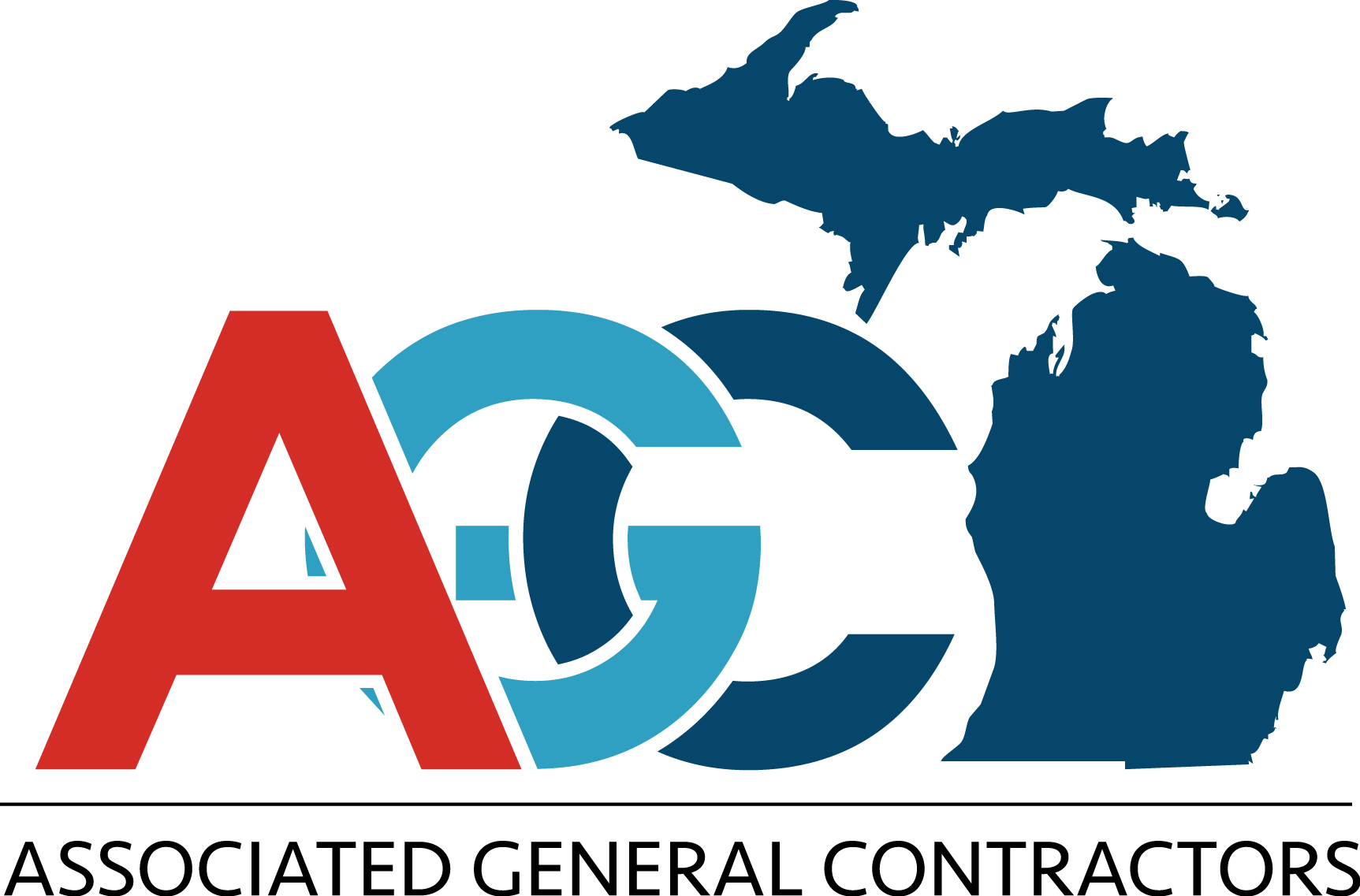A dilapidated, abandoned pharmaceutical manufacturing plant is transformed into Detroit's first Affordable Assisted Living Facility.
RENOVATION & NEW CONSTRUCTION
Location: Detroit, MI
Contract Value: $20,339,773
Size: 132,000 SF | 80 Units | 4 Stories | 32,000 SF Commercial Space
Year Completed: 2013
Client: Presbyterian Villages of Michigan
Financing: MSHDA, LIHTC, Huntington Bank, Grants
Architect: Hooker DeJong
Engineer: Giffels-Webster Engineers, Inc.
Awards: AGC Build Michigan Award 2013
Detroit seniors, according to research, experience a poverty rate twice that of any region in Michigan and have a significantly higher rate of premature death due to a lack of affordable services. With an aging population that is living longer, some say Rivertown Neighborhood is the most important new project in Southeast Michigan. Rivertown’s Program for All-Inclusive Care for the Elderly (PACE) facility offers affordable medical & dental care, social services, occupational health and physical & rehabilitation therapies, secure dayroom for memory loss patients, dietary counseling, dining and social activities. PACE program services are open to all members of the community, not just Rivertown residents. Free shuttles provide transportation from the surrounding areas to and from Rivertown Neighborhood.
Located within walking distance of the international riverfront, Rivertown Neighborhood bolstered the revitalization of Detroit with hundreds of new jobs and a $20 Million investment in the neighborhood. An economic impact study of the area found that the project will have an estimated $278-million ripple effect in the metropolitan Detroit area over 10 years.
The site of Rivertown Neighborhood was formerly an abandoned pharmaceutical laboratory and manufacturing plant. Once part of the massive Parke Davis pharmaceutical manufacturing campus, the dilapidated building stood as shadow of the past and a looming eyesore to the future. Abandoned for over 20 years, this 105,293 square foot, 1940’s structure required an extensive full gut renovation, along with the addition of new space, in order to be transformed into Detroit’s first Affordable Assisted Living facility.
A total interior gut renovation was performed including extensive demolition of original manufacturing equipment and all related pads, foundations and saddles. Vast amounts of process piping and HVAC ductwork were removed along with a large stairwell, freight elevator, and a brick and block penthouse. Hazardous material abatement was necessary to remediate asbestos and universal waste.The building’s shell and structure were retained including floors, columns, beams and roof system. Expansive masonry was tuck pointed and repaired. Additions included a new elevator core in the lobby, eighty apartment units, two new stairwells, and two stories of new space (approximately 27,000 square feet).
The Rivertown Neighborhood development is ultimately a collaborative partnership between four unique agencies: United Methodist Retirement Communities, Presbyterian Villages of Michigan, Henry Ford Health System, and Center for Senior Independence. Each agency contributes a unique portion to the project’s development and operation. Each of these partner organizations had unique and specific architectural and programming needs for their space. Throughout the construction process, meetings were held to address architectural revisions and product selections. Despite numerous scope additions and revisions by the individual partners, OCC succeeded in turning over each of the four floors in time to meet deadlines for resident occupancy and program operations.
Value Engineering: Value Engineering: Conceptual designs for Rivertown included many features that were well beyond the project budget. These elements were reviewed and prioritized with the owner and either removed or significantly scaled back. Original designs called for stepped ceilings to accommodate full glass in typical 22’ wide x 6’8” window openings. In order to reduce heat loss and eliminate costs of conditioning interior ceiling areas, aluminum-clad 1” solid foam panels were installed in the top 2’4” of window openings, an oped ceiling heights were revised to 8’0”. 1” closed-cell foam spray was applied to the interior side of interstitial ceiling space. Initial designs for the building’s electrical system were excessive and inefficient, generating low bid estimates of approximately $2.5 million. OCC and the electrical contractor worked with electrical engineers to redesign switch gear configuration, power distribution, and lighting throughout the building. This highly efficient, value engineered system was accomplished for approximately $1.6 million.
O'Brien worked with the owner and the architect to achieve desired quality and aesthetic results within a limited budget. Existing materials were reused wherever feasible and value engineering was also applied to the building envelope and HVAC. By minimally increasing the investment in higher quality insulation, HVAC costs were significantly reduced.
Structural Frame: The skeleton of the building’s original 2, 3 and 4 story steel and cast-in-place concrete frame was in good condition. New structural steel framing, with metal stud, insulated sheathing and metal clad, was installed to provide an additional 19,321 square feet of space and make the structure 4-stories high throughout.
Masonry: Existing masonry veneer was in fair to poor condition. Extensive repair, replacement and tuck-pointing was performed on stress cracks, lintel, cast-stone sill, capstone, capital, and water belt deterioration.
Insulation: ” 1 closed-cell spray foam insulation was applied to all exterior walls to prevent air infiltration. The remainder of the 3.5" wall cavity was filled with fiberglass batt insulation. 9” of blanket insulation was installed above fourth floor ceiling. Total wall assembly was approximately R-19 and roof insulation was R-38. Sound insulation was installed in unit separation and corridor walls.
Windows: Original 22’ x 6’8” industrial steel-frame single-pane windows were replaced with new thermally-broken aluminum storefront windows, with 1” insulated glass. The upper 2’4” of existing window openings were filled in with aluminum clad solid 1” insulated foam panels to increase energy efficiency and reduce costs.
HVAC Mechanical System and Temperature Controls: A four pipe boiler/chiller fan coil system was engineered for the project and provides individual climate control for each apartment or zone. Dedicated energy recovery units (ERV) are utilized for each of the building’s four floors. System controls monitoring, which can be accessed via the internet, calculates that this HVAC system operates at only a small portion of its total capacity. Engineers credit the building’s highly efficient thermal envelope for this efficiency.
100% Energy Efficient Lighting: Energy Star rated lighting fixtures, most with T8 florescent bulbs and similar luminaire technology, were used throughout the building.
Environmentally Friendly Materials: O'Brien used “green” building materials throughout the project. Carpet was made from post-consumer content and is 100% recyclable. All paints and sealants were low VOC. All bathrooms feature low flow toilets and urinals.
Schedule: Detroit’s Rivertown Neighborhood is the first project to which O'Brien applied the LEAN Construction Pull Scheduling system. At the outset, consultants were brought in to conduct a comprehensive training seminar with all project subcontractors. Immediately following the training, all parties collaborated to develop a comprehensive pull schedule for the entire project. This format fostered communication among all tradesmen and solidified a teamwork approach. Senior Project Manager Dan Ross states that “This technique helped streamline the building process and consolidate an exceedingly challenging construction schedule. I saw subcontractors talking with each other, working together to coordinate work sequences.” The result was encouraging to all involved. Subcontractors at one strategy meeting were enthusiastic about the teamwork approach. “We’re able to interact with the other trades and hold each other accountable,” said one tradesman. “We have a better knowledge of the job.”
In spite of unforeseen conditions, and additional scope/changes requested by clients, the LEAN process facilitated O'Brien’s ability to complete the Rivertown project in a compressed time frame of 13 ½ months. The original schedule allotted 18 months but construction was delayed by funding challenges. Based on Rivertown’s success, O'Brien Construction began using LEAN Pull Scheduling on all large projects.















